The vessel,now a war grave,was only discovered by fishermen in 2019 six miles off Crescent Head,north of Port Macquarie,but COVID-19 prevented a formal wreath-laying at the site until now.
Of the crew of 37,only five survived. A Captain Mason,being one of them,was able to relay the details later at a meeting of Grafton Rotarians.
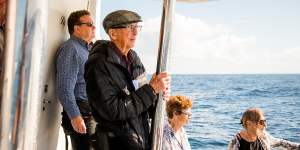
Brian Durie and his son David Durie.Matt Jorgensen
Mason in a report in Grafton’sDaily Examiner told how after breakfast on the day of the sinking on April 29,1943 he was on the bridge with the Master,Captain Charles Benson and the chief Engineer.“There’s a cup of tea for you in the wireless room” said the Master. Captain Mason went to get it,thinking at the time what a shame it was that there were no biscuits.
“He had just returned to the bridge when the chief engineer yelled out “Look to port. There they saw a huge splash made by a submarine as it crash-dived 300 yards away. And coming towards them were two wobbling torpedoes. Next moment there was a violent explosion.”
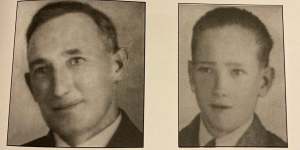
James Robert Durie and his son Kenneth James Durie.Supplied
Survivors told how the Wollongbar,having been hit by two torpedoes,broke in two with the bow and stern rising sharply in the air. The submarine was thel-180 surfaced by Captain Toshio Kusaka some 450 metres from the steamer.
All of Port Macquarie turned out to see the five survivors who had been picked up.“Where are the rest of them,” was the constant question.
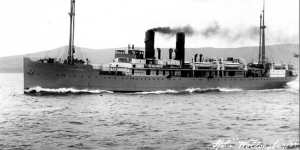
The coastal freighter SS Wollongbar.Supplied
Lachlan Benson from Haberfield,Sydney who was among some 50 relatives who attended the service over the wreck on Friday said his great,great uncle ( his father’s great uncle) was Captain Benson.
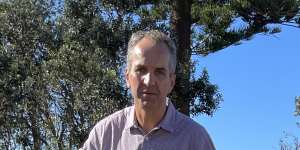
Lachlan Benson,who is related to the Wollongbar’s Master,Captain Charles Benson.Supplied
“His role was heroic because he knew that they were going to be in trouble sailing in daylight from Byron Bay[to Newcastle] having searched for survivors from a US ship that had been torpedoed a few days earlier. He actually cut the lifeboats free of the davits so that if they were attacked by a submarine then the lifeboats would float free.
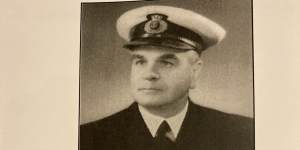
Master of the Wollongbar,Charles Theodore Benson.Supplied
“For the people that survived,it is in my mind,thanks to him. The torpedoes were running and he yelled out:Look after yourselves boys.”
White roses and several wreaths were laid on the water during the ceremony. “The ashes of Charles Benson’s son,Philip who died in 2010,were also laid to rest on his father’s grave so father and son were reunited.”
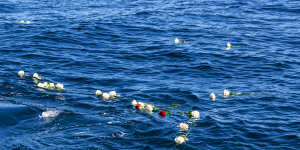
Roses on the water above the wreck of Wollongbar.Matt Jorgensen
David Durie from the Blue Mountains attended the wreath-laying with his parents,Ann and Brian Durie,siblings Scott and Tara and cousin,Dale. They laid white roses to his grandfather James Durie,48,and uncle Ken Durie aged 17. He said James had two other sons,one serving as a paratrooper in the British Army and another a machine gunner on Kokoda. Both survived the war.
“Today there was a minister from the Mission to Seafarers who conducted a service and a bell rung and a white rose for each person who perished on the ship and some wreaths. My father has just turned 84 and was five when his father and brother died,it was a sombre day,but he handled it well.”
Minister for Heritage James Griffin said the wreck was finally identified in 2019 after
spending 77 years below the surface.
“Many of the relatives of the 32 mariners who perished in the Japanese submarine
attack would look out to sea and wonder where their loved ones were,hoping that one
day the ship would be found,” Mr Griffin said.
“It took 77 years for the Wollongbar (II) to be discovered off the Mid North Coast after
reports from a local fisherman led to an investigation and identification by maritime
archaeologists from Heritage NSW.“
When the vessel sank,it was carrying thousands of boxes of butter which eventually washed up on the shore resulting in a boom in cake making given that butter was rationed during the war.
The Morning Edition newsletter is our guide to the day’s most important and interestingstories,analysis and insights.